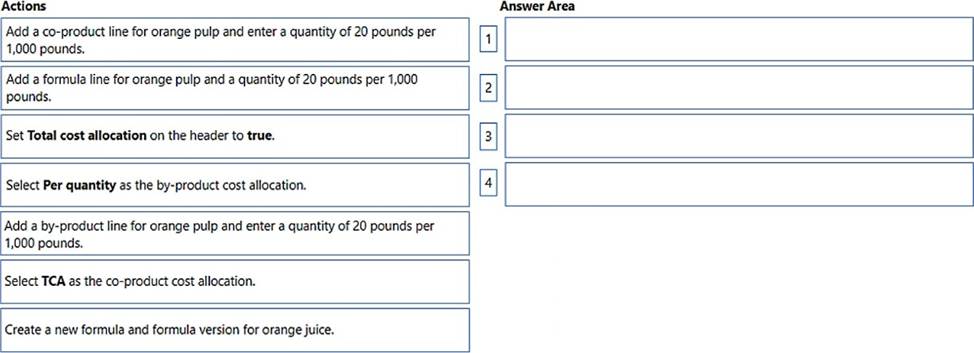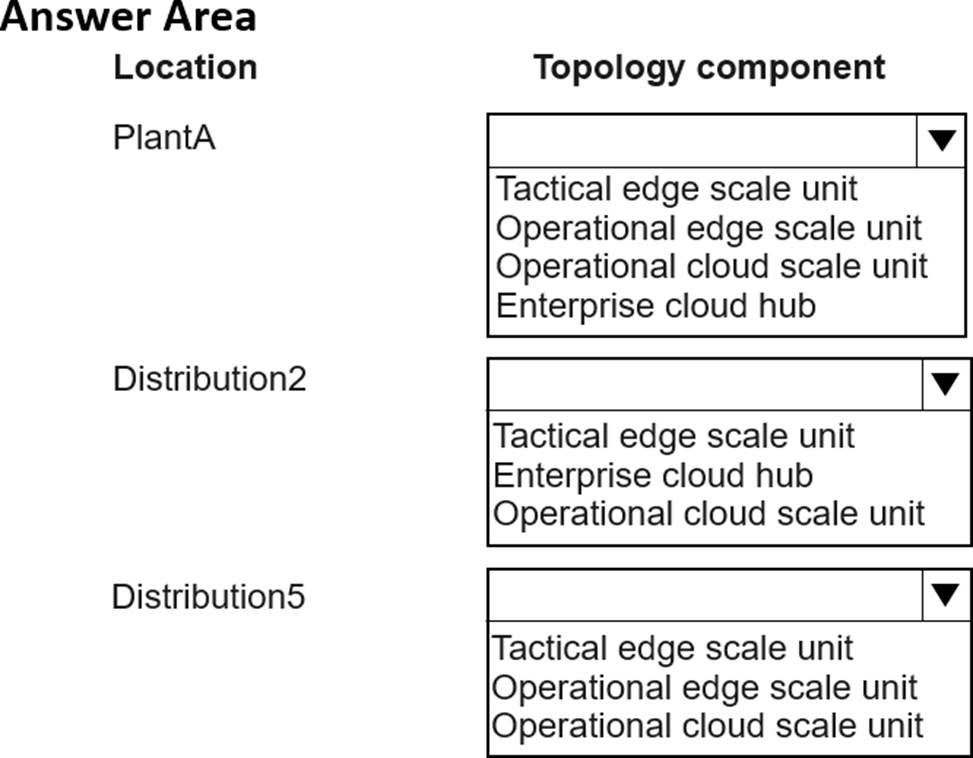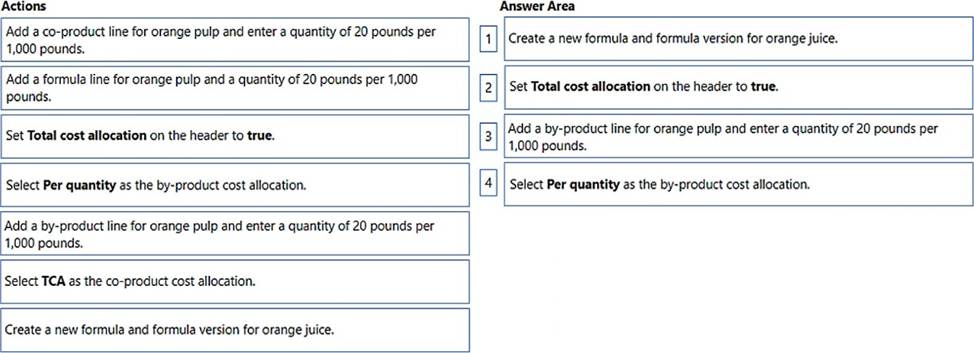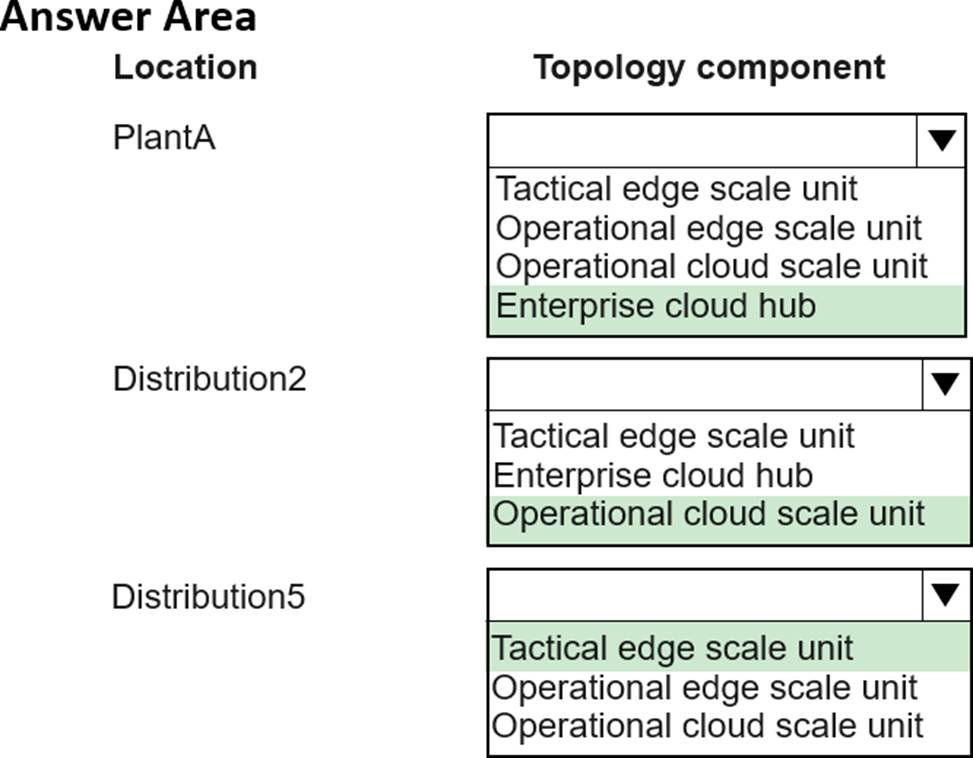Microsoft MB-335 Übungsprüfungen
Zuletzt aktualisiert am 27.04.2025- Prüfungscode: MB-335
- Prüfungsname: Microsoft Dynamics 365 Supply Chain Management Functional Consultant Expert
- Zertifizierungsanbieter: Microsoft
- Zuletzt aktualisiert am: 27.04.2025
DRAG DROP
You are the product manager at an orange juice manufacturing company.
For every 1,000 pounds of orange juice, 20 pounds of orange pulp is created which can be sold or reused profitably. The cost is calculated as a weighted average between the quantity of orange juice that is reported as finished and the orange pulp based on the standard cost of each item.
You need to create the formula for orange juice that will produce orange pulp as a result of finishing a batch order.
Which four actions should you perform in sequence? To answer, move the appropriate actions from the list of actions to the answer area and arrange them in the correct order.

Note: This question is part of a series of questions that present the same scenario. Each question in the series contains a unique solution that might meet the stated goals. Some question sets might have more than one correct solution, while others might not have a correct solution.
After you answer a question in this section, you will NOT be able to return to it. As a result, these questions will not appear in the review screen.
A company implements Dynamics 365 Supply Chain Management and configures the system to support process manufacturing.
The company manufactures pain-relieving lotions. Several of the primary ingredients are delivered at different concentrations depending on the ingredient and vendor. Ingredient A is the primary active ingredient in the lotion. Ingredient B is used as a compensating ingredient. You need to ensure that the system is set up to support the manufacturing process.
Solution: Create a dimension-based product with configurations. Use a price model to calculate the different configurable option costs.
Does the solution meet the goal?
- A . Yes
- B . No
Note: This question is part of a series of questions that present the same scenario. Each question in the series contains a unique solution that might meet the stated goals. Some question sets might have more than one correct solution, while others might not have a correct solution.
After you answer a question in this section, you will NOT be able to return to it. As a result, these questions will not appear in the review screen.
A manufacturing company produces electronic components and devices.
The company has scheduling issues related to using working time calendars in manufacturing.
You need to ensure that the working time calendar is used when manufacturing jobs are scheduled.
Solution: Enable route groups for a process job type.
Does the solution meet the goal?
- A . Yes
- B . No
You are a process engineer evaluating Lean vs. Discrete processing. You want to convert a Kanban item.
This item has the following Lean setup:
• The setup uses a Lean schedule group with a throughput ratio = 2.
• The process activity tied to production ow has the following runtime activity times: time = 3 min, per quantity = 1.
• The work cell capacity has a model type of Throughput and an average throughput quantity of 60 per a capacity period of standard workday (8-hour day).
• The throughput is 10 per hour.
You need to set up a Discrete operation to mirror the item’s production ow activity.
What should you do?
- A . Create a route with a runtime = 6, a process quantity = 1, and the operation’s hours/time = 1.
- B . Create a route with a runtime = 1, a process quantity = 6, and the operation’s hours/time = 1.
- C . Create a route with a runtime = 10, a process quantity = 6, and the operation’s hours/time = 1.
- D . Create a route with a runtime = 6, a process quantity = 1, and the operation’s hours/time = 0.0167 (e.g. 1 hour/ 60 minutes).
HOTSPOT
A company uses Dynamics 365 Supply Chain Management.
The company wants to use the distributed hybrid topology model to alleviate performance issues at some of its distribution centers. The company has a manufacturing plant, Plant A, which resides at the same physical location as the company home office in Frankfurt, Germany.
The company has the following distribution locations:
• Distribution1 covers Scotland.
• Distribution2 covers Ireland.
• Distribution3 covers the United Kingdom.
• Distribution4 covers Belgium, Germany, and the Netherlands.
• Distribution5 covers the Shetland Islands.
All distribution warehouses use Dynamics 365 Supply Chain Management to receive and distribute goods from Plant A.
Warehouse personnel use the warehouse app to perform their job functions. Because of their proximity to each other, Distribution1, 2, and 3 are managed together and frequently transfer goods between each location.
Due to several connection issues with Dynamics 365 Supply Chain Management, the Shetland Islands location struggles to perform tasks.
The company must maintain as little of its own IT infrastructure as possible, especially in remote areas, but still support daily activities at all locations.
You need to recommend the appropriate topology configuration.
Which type of scaled unit should you use? To answer, select the appropriate options in the answer area.

DRAG DROP
A company uses Discrete manufacturing concepts to produce cables. The company’s production scheduler uses internal documents to track issues on in-process production orders.
The production scheduler must group all in-process production orders according to issues. The scheduler must be able to easily determine issues with production orders.
You need to implement a method to easily identity production orders with issues.
Which three actions should you perform in sequence? To answer, move the appropriate actions from the list of actions to the answer area and arrange them in the correct order.




